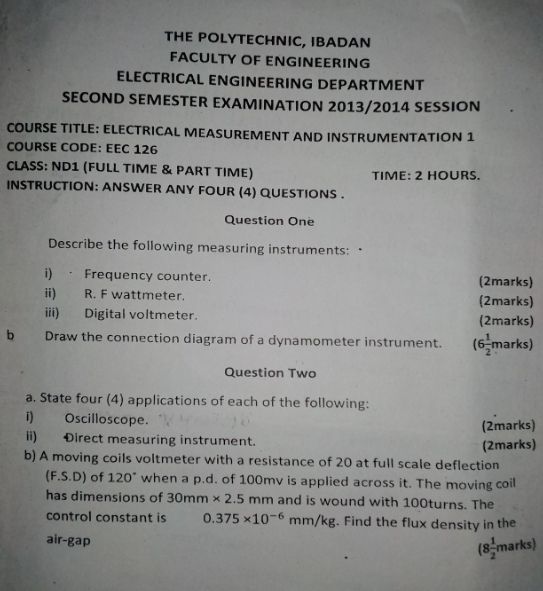Explain how to use an analogue multimeter
(1) To test non-polarized capacitors.
(2) To test NPN transistor.
(3) to test Diode
(4) To test PNP transistor
(5) To test a polarised capacitor
(2) To test NPN transistor: suppose your ohmmeter test shows high resistance with the negative ohmmeter connected to the base of the transistor and the other lead is switched from transistor lead
Continue testing as follows;
(I) Reverse the ohmmeter leads, connecting the positive lead to the base of the transistor.
(II) connect the negative lead from the ohmmeter first to the transistor lead, then to the other.
(III) if both reading, show low resistance you have an NPN transistor.
(3) Diode: The multimeter can be used to measure the goodness or otherwise of a diode. The ohmic section (Ω range) of the meter is used. After the zeroing adjustment, the forward resistance is measured this should read LOW, while the reversed resistance is also taken, this is to read HIGH ( i.e there should be high reading in one direction and low reading in the other direction) to indicate that the diode is healthy (good) one.
(4) To test PNP transistor: Supposed you have a transistor to install, but cannot tell whether it is PNP or NPN. First, make sure that you know which is the positive lead and which is the negative lead of your ohmmeter. If necessary, take off the back of the instrument and check the polarity of the battery against the lead connection (i.e positive-positive and negative-negative)
Steps to take;
(I) hook the positive lead from the ohmmeter to the base of the transistor.
(II) Connect the negative lead from the ohmmeter first to one transistor lead, then to the other.
(III) if both readings show high resistance, hook the negative ohmmeter leads to the base of the transistor.
(IV) connect the positive lead from the ohmmeter first to one transistor lead, then to the other one.
(V) if both readings show low resistance, you have a PNP transistor.
(5) To test a polarised capacitor: for the dielectric to form in this, a positive voltage must be applied to the positive lead of the capacitor (marked by a+) from the multimeter terminal of positive polarity.
When first connected, the resistance is low but rises as the dielectric forms.
What’s the main difference between NPN and PNP transistor. [4 marks]
In NPN transistor, a positive voltage is given to the collector terminal to produce a current flow from the collector to the emitter but in a PNP transistor positive voltage is given to the emitter to Collector.


Excellent beat ! I would like to apprentice while you amend your
site, how can i subscribe for a blog site? The account
helped me a acceptable deal. I had been a little
bit acquainted of this your broadcast offered bright clear concept
You really make it appear so easy with your presentation but I in finding this matter
to be actually one thing that I feel I might by no means understand.
It sort of feels too complicated and extremely wide for me.
I’m having a look ahead to your subsequent post,
I will attempt to get the dangle of it!
It’s genuinely very difficult in this full of activity life
to listen news on TV, so I just use web for that reason, and get the
hottest information.
Good post. I learn something totally new and challenging on websites I stumbleupon every day.
It’s always helpful to read articles from other writers and practice a little something from their sites.
Excellent post. I absolutely appreciate this website.
Thanks!
You’re welcome
I visited several sites but the audio quality for audio songs present at this web site
is truly wonderful.
great points altogether, you just won a new reader.
What might you recommend about your publish that you simply made a few days
in the past? Any sure?
I’ve made different post, if you could squeeze some of your time to check few, it will be appreciated